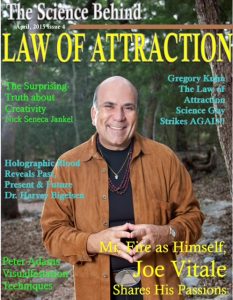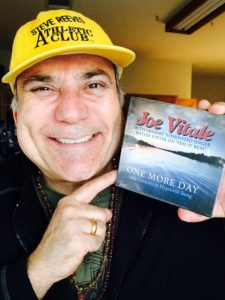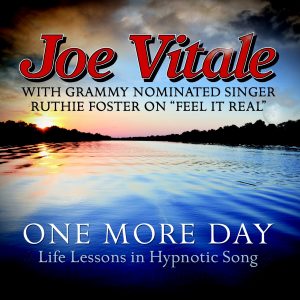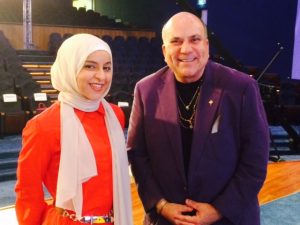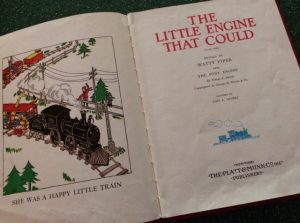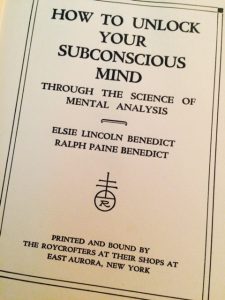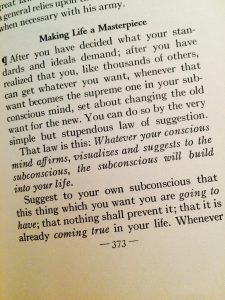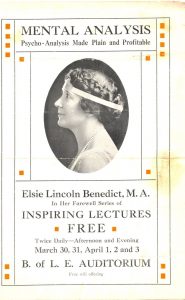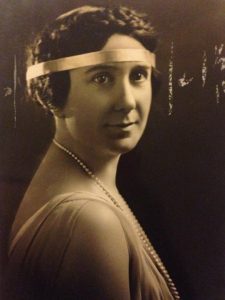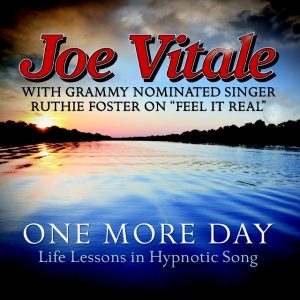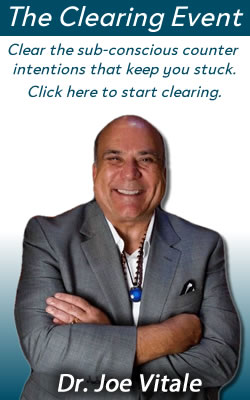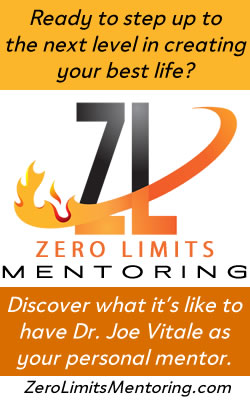Tag: positive thinking
Law of Attraction Songs
This exclusive article was first published in the April 2015 issue of The Science Behind Law of Attraction national magazine and in the April 2015 Austin All Natural Central Texas magazine. It’s mostly about the Law of Attraction songs on my latest singer-songwriter album, One More Day: Life Lessons in Hypnotic Song, which is sold out as a collectible CD/Book but now available for download on iTunes or from http://www.cdbaby.com/cd/onemoreday
Law of Attraction Songs
From The Secret movie to World’s First Self-Help Singer-Songwriter, Bestselling Author Joe Vitale Releases Fifth Album of LOA Songs
“They are like complete self-help books in 3 minute song.”
An Exclusive by Dr. Joe Vitale
If you ever felt “I can’t get what I want,” you might thank the Rolling Stones. Their music, and much popular music, innocently but effectively programs listeners for lack and limitation. Their song, “You Can’t Always Get What You Want,” started installing that limiting belief in listeners in 1969. Few think of music as an agent for programming, though. And few would look at that song as a type of brainwashing.
Yet music can slow down our progress with the Law of Attraction, and even prevent attracting what we want. It all happens unconsciously, of course. But that’s how the Law of Attraction works: you attract a match to your unconscious beliefs, not necessarily to your conscious ones.
While I like the Rolling Stones, too, I wanted to do something about music that limits. So I studied song writing, gathered experienced musicians, and recorded music that does the opposite: it joyfully rewires you to attract magic and miracles.
For example, the song “Feel It Real,” on my brand new album, One More Day: Life Lessons in Hypnotic Song, advises you to attract what you want by feeling it real. To add impact, I had Grammy nominated singer Ruthie Foster add her soaring vocals to my lyrics. Now you have a song that sounds great, feels great, and also programs you for a better life.
The song “The Hook” is a song I wrote to remind you not to take any “hooks” from other people, meaning don’t let them push your emotional buttons or engage you in a negative way. The song’s rocking mantra of “Don’t Take the Hook” becomes an awareness technique so other people don’t bring your vibration down. As long as you stay aware of “hooks” in life, you can stay peaceful, and focus on attracting what you desire.
And the title track song is a barnstorming rocker, made with Rock and Roll Hall of Fame drummer Joe Vitale (yes, he has the same name as me). It motivates you to “seize the day!” It says you have “one more day” so you better take action and go for your dreams right now. Today!
Then there’s a jazzy track called “Shock Yourself,” which is about getting out of your comfort zone. Too many of us get the same results every day because we do the same things and think the same things every day. The formula needs shaken up. The song urges you to “Jump and skip, chase away the blues…You are here to laugh and sing…You are here to live, not rust.” Again, the blend of words and music, with bass guitar by Glenn Fukunaga, flute by the other Joe Vitale, guitar by producer Daniel Barrett, come together to make a song that is hypnotic.
Music works on our body and mind in mysterious and wonderful ways. The melody can put you in a trance. I know from my work in hypnosis that when you are in even a light trance, you can accept beliefs. The words in a song can get installed in your mind. They are affirmations to music. You can become a new person in minutes with the right song. You could also become an unhappy person in minutes with the wrong song.
Every song on my new album is like a condensed self-help book. Instead of taking an entire volume to deliver the message, these songs do it in about three minutes.
For example, the song “Deep Within” points to the power center within you, beyond your mind and emotions. It guides you “deep within” to the soul or Witness behind it all. From there, you can attract whatever you imagine.
And the fun song, “Some Thoughts,” reveals that some of our thoughts are helpful and some are not. It advises you to pretend you have a “jukebox in your mind” so you can change your thoughts by reaching for the ones that make you feel good. It’s like changing a tune on the radio or on your audio player. It’s basic Law of Attraction in song.
I also have two instrumental tracks on the new album, created with me playing baritone saxophone on one and baritone guitar on the other, that are mind adventures. You can just listen as the music raises your vibration. These are also great tracks to relax to as you visualize what you want to have, do, or be.
It’s probably important to realize that I became a musician by attracting it. I wasn’t always a musician. I decided to be one when I was about 57 years old. It was on my “bucket list.” I had all the doubts and fears that anyone else might have attempting something new, but I also knew that “some thoughts” would help me become a musician and some would not. I went with the thoughts that were positive and supportive. And I made sure to “feel it real.”
Now, at the age of 61, I have eleven albums out, with One More Day being my fifth singer-songwriter offering. Many of the instrumental albums I recorded with Guitar Monk Mathew Dixon are bestsellers. I’ve also been voted #1 singer-songwriter by Reverbnation. And several of my songs have been nominated for the Posi Award, considered the Grammy’s of positive music. I’m sharing this not to brag, but to let you know that you, too, can attract your dreams. Anything is possible.
I still love the Rolling Stones, but I’m aware that unless you stay alert, their catchy tunes (and many others by other bands, not just the Stones) can help you create a reality you don’t want.
If you want to use music to help you use the Law of Attraction in more joyful ways, listen to music that is upbeat, positive, and makes you feel like the super being you really are.
Dr. Joe Vitale is the globally famous author of numerous bestselling books, such as The Attractor Factor and Zero Limits, a star in the hit movie The Secret, founder of Miracles Coaching and The Secret Mirror, inventor of Hypnotic Writing, and a man “on fire” to live his passions and help the world. His main site is www.JoeVitale.com His new album, One More Day, is at www.OneMoreDayCD.com All of his LOA albums are at http://www.allhealingmusic.com
Your Little Engine
On my recent visit to Kuwait, a smiling woman named Alaa Alothman came up to me while I was autographing books and asked something that stopped me in my tracks.
“You say that many books have influenced you throughout your life,” she began, “so I am curious what children’s book had an impact on you?”
I looked up and just stared at her.
“What a truly great question,” I announced. “I’ve never been asked that before.”
I hadn’t, either.
I went on to tell her that I’d have to think about it, as it was something I never considered.
It truly made me think.
After all, what children’s book did I read almost 60 years ago?
We talked for a few moments while my mind searched my memory banks for an answer.
And then it dawned on me.
“You know, it may sound simple, but I think The Little Engine that Could was probably the first book that inspired me as a child. I vaguely remember my mother reading it to me in the 1950s.”
Alaa smiled big, nodding her recognition of the famous book.
“The book was about an engine and my father worked on the railroad,” I said. “And the message was about believing in yourself, which I soaked up. It was probably the first self-help book I ever discovered.”
After the event in Kuwait, I became curious about the famous children’s book.
Turns out the story of the positive self-talking little engine goes back to at least 1906.
The first known use of the story is attributed to Rev. Charles S. Wing, who probably didn’t originate the story but delivered it to his congregation in Brooklyn in 1906.
It went like this:
In a certain railroad yard there stood an ex tremely heavy train that had to be drawn up an unusually heavy grade before it could reach its destination. The superintendent of the yard was not sure what it was best for him to do, so he went up to a large, strong engine and asked :
“Can you pull that train over the hill?”
“It is a very heavy train,” responded the en gine.
He then went to another great engine and asked:
“Can you pull that train over the hill?”
“It is a very heavy grade,” it replied.
The superintendent was much puzzled, but he turned to still another engine that was spick and span new, and he asked it:
“Can you pull that train over the hill?”
“I think I can,” responded the engine.
So the order was circulated, and the engine was started back so that it might be coupled with the train, and as it went along the rails it kept repeating to itself: “I think I can. I think I can. I think I can.”
The coupling was made and the engine began its journey, and all along the level, as it rolled toward the ascent, it kept repeating to itself: “I —think —I can. I —think —I— can. I —think— I —can.”
Then it reached the grade, but its voice could still be heard: “I think I can. I—– think—–I—–can. I —–think—– I—– can.”
Higher and higher it climbed, and its voice grew fainter and its words came slower:
“I ——-think ——–I——-can.”
It was almost to the top.
“I ———think”
It was at the top.
“I ———can.”
It passed over the top of the hill and began crawling down the opposite slope.
‘I ——think——- I—— can——I—– thought——I——-could I—– thought—– could. I thought I could. I thought I could. I thought I could.”
And singing its triumph, it rushed on down toward the valley.
But the best known version of the story is the book, The Little Engine that Could, published in 1930 and attributed to Watty Piper, the pen name of the publisher, Arnold Munk.
No one knows with any agreed certainty who actually originated the story.
That little story about “I think I can…I think I can…” influenced many, including me.
What children’s book influenced you?
Ao Akua,
joe
PS –My new book, The Secret Prayer, will be available soon. You can hear the actual prayer online, for free, by clicking right here.
Your Secret Desire
Elsie Lincoln Benedict – the forgotten wonder woman of self-help who I wrote about here on my February 15, 2015 blog post – taught me something profound.
I was reading her 1921 book, How to Unlock Your Subconscious Mind (sometimes called Mental Analysis: How to Unlock Your Subconscious Mind) when I came across this insight in the final chapter:
“Whatever your conscious mind affirms, visualizes and suggests to the subconscious, the subconscious will build into your life.”
For you and I today, that’s probably not news. But in 1921, it was a breakthrough new concept.
It basically said that you could choose what you want with your conscious mind, and with intention and imagery, you could get it into the subconscious, where it would take seed and begin to grow.
Why is this so important?
Because Elsie said something else right before revealing that concept that was even more insightful, and something so profound that I had to reread it a few times.
Elsie wrote –
“This newest, hitherto unpublished and most far-reaching of all the discoveries concerning the laws of human life is that every human being GETS his supreme subconscious wish.”
In short, there is a type of prime directive in your subconscious mind.
It is the secret guiding desire for your life.
You may not know what it is, but your subconscious is attracting into your life everything to make it real.
What you are getting right now is a match to the secret desire of your subconscious – your “supreme subconscious wish.”
In my own work, I talk a lot about counter-intentions.
A counter-intention is a hidden belief in contrast to what you consciously say you want.
You might consciously say you want a new job, but unconsciously believe you won’t get one due to the economy (or some other excuse/reason/belief), and your unconscious, being more powerful, will make the counter-intention come true.
Elsie would probably agree but her deeper insight is that the subconscious has one major intention and it will allow nothing to come about to contradict it.
Elsie explains –
“Let us repeat: Your supreme subconscious wish dictates your life. It permits nothing seriously to interfere with its materialization. It is automatic, implacable. What you want most of all, as a condition in your life, it will get for you.”
Now think about this.
If your conscious intent is to attract more money – for yourself or others or causes you believe in – but your secret subconscious wish is to avoid money so you consider yourself “spiritual,” then your subconscious mind will make sure that you get your chief hidden intention — and stay broke.
Your subconscious secret desire will win.
It’s the same scenario with anything you can name.
Want a relationship but secretly want to stay alone because it feels safer?
Then nothing you do will work because the secret intent of your subconscious will control the outcome. You will be alone but “safe.”
Want better health but secretly want to stay ill so you can avoid taking actions and risks in the world?
Then your overriding subconscious desire will make sure you stay ill. You will be sick but “risk free.”
Elsie goes on to explain that your secret desire is for a feeling or condition, not anything specific. She says –
“Our supreme subconscious wish is never for any specific thing or person but for a condition, a certain avenue of self-expression.”
Elsie’s insight, offered in 1921, is a mind opener.
Here’s why –
First, realizing you have a secret subconscious “prime directive” helps explain why you are attracting what you have in your life: your subconscious insists on it.
Second, realizing you can change your subconscious secret desire to something else – with your conscious mind affirming and visualizing a new outcome – is enlightening and empowering.
Once again, Elsie has rocked my world.
I trust you see the power of these insights from our dear woman of the 1920s.
But here’s a suggestion –
You can sit and reflect on what your subconscious might want for you, which will help explain what you are attracting into your life.
You can then use your conscious mind to offer new instructions to your subconscious, reprogramming it to help you attract more of what you consciously prefer.
Got it?
Elsie was pointing the way to the hidden operations in our mind, long before positive psychology and neuroscience came into play.
Thank you, Elsie.
I love you.
Ao Akua,
Joe
PS – Unraveling your own beliefs can be tricky, since you are the one wrapped up inside of them. The fastest way to expand your mind is with the help of your own Miracles Coach. Check out Miracles Coaching.
When Affirmations Fail
“Affirmations don’t work for me.”
“That’s an affirmation, you know.”
“Huh?”
“Affirmations are anything you affirm as true,” I explained. “You can affirm something positive or something negative.”
“Say what?”
“You said ‘Affirmations don’t work for me’ which is an affirmation that affirmations don’t work for you.”
“I don’t follow.”
“You get what you believe and expect,” I explained. “If you believe affirmations won’t work for you, then you will get the experience of affirmations not working for you.”
“But they really don’t work for me!”
“I know. That’s because you are affirming that they don’t work.”
“You’re confusing me!”
“Look, the meaning you give an event is the belief that attracted it. If you feel affirmations don’t work, then you are attracting experiences to prove that affirmations don’t work. If you switched it, you could attract proof that affirmations do work.”
“But how would I do that when my mind says they don’t work?”
“That’s simply what you currently believe,” I went on. “It’s your current habit of thinking. But you can begin a new habit by beginning a new thought process today.”
“It’s that easy?”
“It’s simple but maybe not easy,” I said. “But you can begin right now.”
“Affirmations do work?”
“That’s a start.”
Ao Akua,
Joe
PS – You can see your beliefs more clearly when you have a trained objective person helping you. Consider http://www.MiraclesCoaching.com

